18 Stories About Parents Who Support Their Children in Everything

The NASA hotline is ringing off the hook! The call center operator is all sweaty from stress. They barely have time to answer the phone, and all the messages they get say the same thing. There’s something glowing on the Moon.
Indeed, hundreds and thousands of amateur astronomers were watching the Moon that night. And suddenly, there was a bright light on it. As if someone had lit a powerful spotlight on the surface.
Scientists immediately began to look for an explanation to this phenomenon. They first thought it was simply the glow of an airplane flying between the observers and the Moon. But then it wouldn’t have been seen by so many people from different parts of the world at the same time.
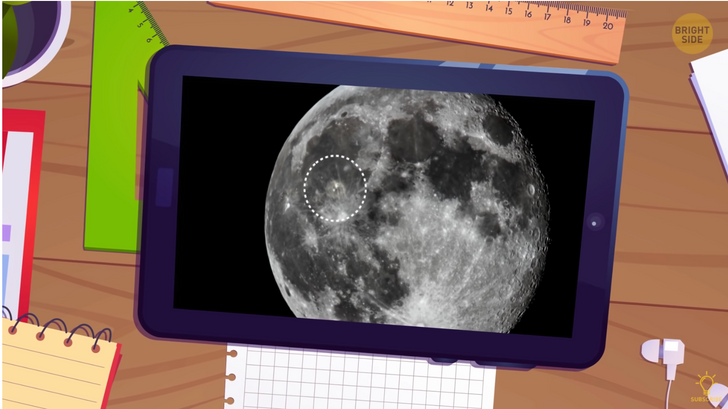
The next suspects were the Starlink satellites. Theoretically, one of them could’ve played a cruel trick on amateur astronomers. They could’ve mistaken the small satellite’s light for a flash of light on the Moon. But then again, if the satellite were the culprit of this mess, the flare wouldn’t be static, but moving.
While some scientists continue to search for an answer to this mystery, others decide to investigate the phenomenon in more detail. For this purpose, they have built a new telescope north of Seville, Spain. The conditions there are quite suitable for observing the Moon.
The telescope has two cameras controlled remotely from the campus in Germany. If both cameras pick up any unusual phenomenon on the surface of the Moon, it will quickly zoom the telescope there to see what’s going on. It’ll also require advanced artificial intelligence to teach the cameras to distinguish between the unexplained phenomenon on the Moon and the light of an airplane, a satellite, or a small meteorite that just entered Earth’s atmosphere.
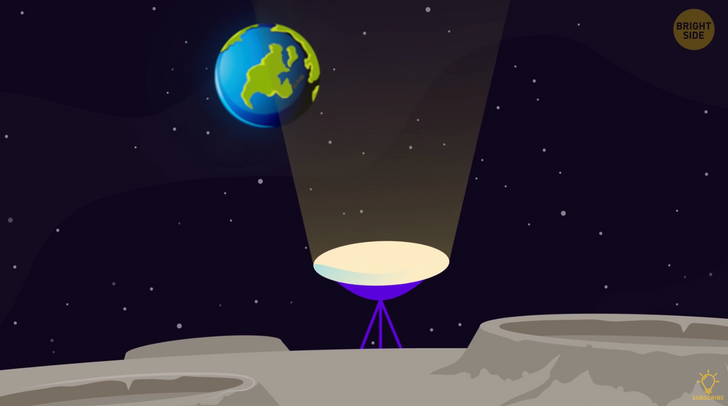
While the telescope is doing its investigation, we already have a theory that may explain the appearance of such bright round flashes on the Moon’s surface. So, the Moon influences the tides of the seas and oceans on Earth with its gravitational force. But the Earth can affect the Moon in the same way. Only the force will be [x] 32.5 times stronger.
While the Moon orbits the Earth, at one point, it may be as close to our planet as possible. Then, the force of the interaction will be greatest. At this point, tidal forces may force cracks in the surface of the Moon to open, and release gas from its interior. A powerful jet of gas will lift the lunar dust with it. And what we see as a bright flash through our telescopes is really just a fog of dust, which is round and reflects sunlight well.
If you look at it from a distance, it really does look like a flash. As the dust rises, we think there’s been a small explosion. And that flash gradually fades as the dust settles down. These things happen all the time on the Moon’s surface. They’re called transient lunar phenomena. And besides lunar flashes, much more mystical and bizarre things have happened.
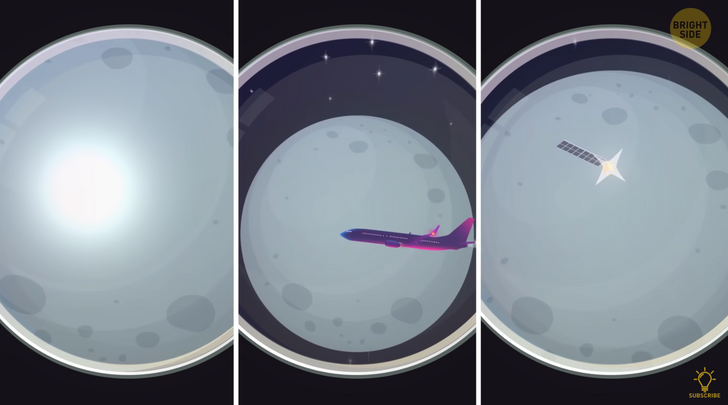
Back in 1178, five monks claimed to have seen the Moon, being in the shape of a horn, begin to split in two from an upper point. Then, fire and sparks began to blaze from the place of separation. It was as if a dragon were spewing flames. In the next moment, the Moon began to pulsate and then returned to its calm state. This phenomenon was repeated more than ten times. And the flames took different shapes each time.
When this nightmare was over, the Moon turned black. It wasn’t until the 20th century that scientists tried to explain the phenomenon. They theorized that a large asteroid collided with the Moon at the time. And it was this asteroid that should be blamed for creating the Giordano Bruno crater, 15 Brooklyn Bridges wide.
But in that case, millions of tons of fragments from the asteroid would’ve hit the Earth as well. And then, people would’ve seen an incredible meteor shower. It would’ve been very bright, and the memories of it would definitely have been in the archives. But that didn’t happen.
Now, the phenomenon the monks observed seems questionable. Perhaps they did see an asteroid fall. Only it was falling on the Earth itself, and they perceived the light from the burning meteorite as something sinister happening on the Moon. Or maybe the monks were simply imagining things. There’re no witnesses to this event other than them.
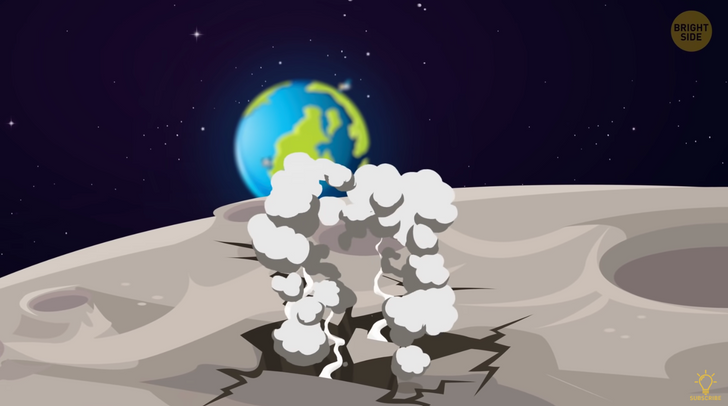
Another unusual phenomenon is the blue and red lights on the Moon. They can be seen when it’s horn shaped. And this occurs most often in the Aristarchus crater. The flashes come and go very quickly. Almost like lightning. In fact, this is electricity.
Tidal forces are to blame for this, too. They cause mechanical stress to build up in the rocks. This can produce an electric field, which creates the blue flashes that have surprised many amateur astronomers. There can also be starbursts on the Moon. We can blame this on meteorites that fall on the surface.
Because the Moon has no atmosphere, asteroids that approach it don’t burn up. Having a lot of weight and speed, they cause an explosion on impact. And here on Earth, we see it as a starburst. For example, on May 13, 1972, there was a meteorite impact of 1,000 tons of TNT near where Apollo 14 landed. If we lived much earlier, we might have witnessed constant bright flashes on the Moon’s surface. All the craters there are formed by such meteor strikes.
So imagine the fireworks that were there years ago. And a lot of those meteorites were even useful, too. They brought water with them. Yes, there is water on the Moon. NASA confirmed this fact after studies with the SOFIA telescope. It was mounted on an airplane. The observations were made from the upper atmosphere of the Earth. At such an altitude, the dry air allowed the telescope to see even the smallest details.
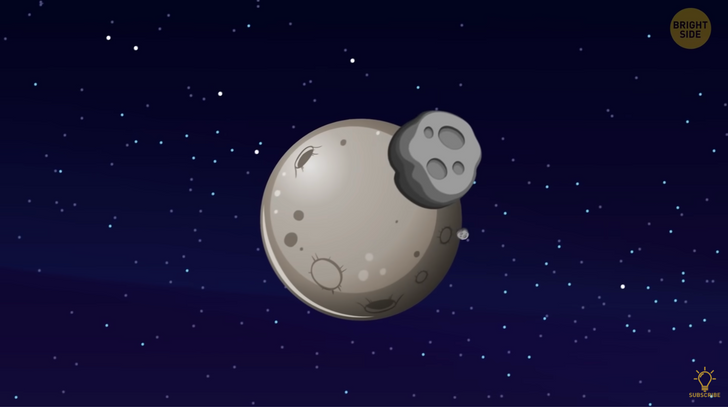
Water might’ve been in the craters at the poles of the Moon. These places had never seen light, and the water there might be encased in ice. But SOFIA found water on the sunlit surface of the Moon. Of course, it’s only H2O molecules that are present in the dust layers, but that’s something. If we manage to collect all this water, we’ll get very little of it. In comparison, the Sahara Desert has about 100 times more water than we found on the Moon.
But an even more unusual phenomenon is happening there right now. The Moon is actually rusting. Just like a piece of old metal. For rust to appear, we need iron, water, and oxygen. Lunar soil has enough iron in it. And, as we’ve already learned, there’s some water too.
The last piece of the puzzle is oxygen. Everyone knows there’s no atmosphere on the Moon, and we can’t breathe there. But oxygen is still present. The solar wind brought it there. The wind from our warm star moves at an extremely high speed.
It scrapes oxygen from the upper parts of our atmosphere and carries it further through space. Eventually, the wind with the oxygen molecules reaches the Moon. Voilà! All the ingredients for corrosion are in place, and the iron ore on the surface of the Moon begins to take on a reddish hue.
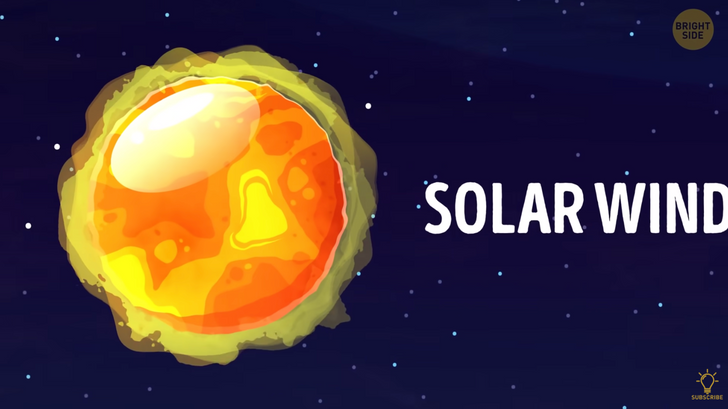
If this process goes on long enough, in the distant future the Moon will look like Mars. It will turn orange-red. Yes, the signature color of Mars came exactly from the corrosion that began there thousands and thousands of years ago, when there were rivers and seas with water and an atmosphere with oxygen.
Other strange objects that can be seen on the Moon were left there by humans. Between 1969 and 1972, 12 people visited [the Moon] there as part of the Apollo program. In all, there are six landing sites where the astronauts left a bunch of stuff behind. Besides a couple dozen satellites and spacecraft that fell or landed softly on the Moon, there’s a lunar rover, some United States flags, a family photo of one of the astronauts, and even three golf balls.
And the first two people to be on the Moon left behind a whole pile of stuff. When they were about to go home, they took a lot of soil samples and rocks with them. And to carry it all away, they had to get rid of everything unnecessary on board the lunar module. The TV camera, the sample collection tools, the science equipment, and even the armrests from the seats.
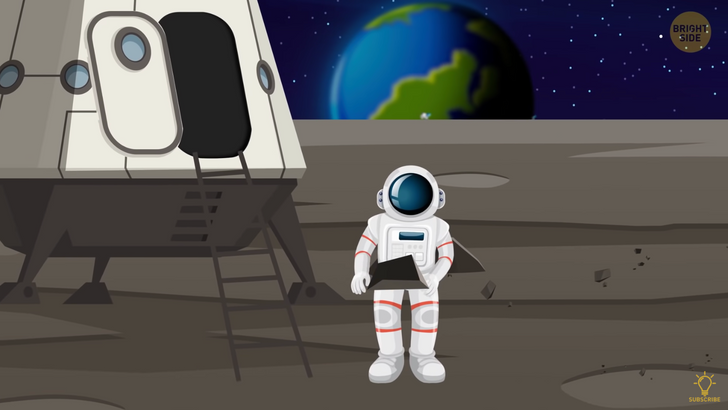
The astronauts stood outside the lunar module for a full eight minutes and threw out a whole mountain of unnecessary items.
If you collect all these objects and debris that we left there by 12 astronauts and put them on the scales, it will show about 199 tons. That’s like three heavy armored tanks or three large passenger planes. Strange but true.











